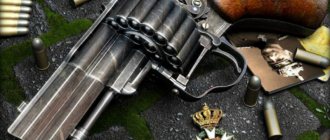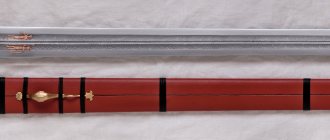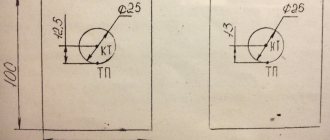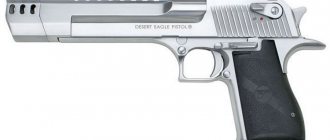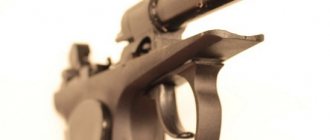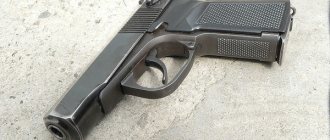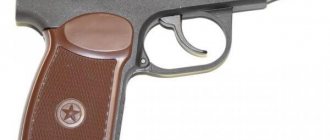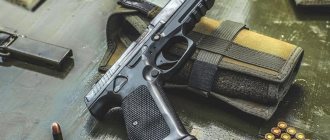Disassembling and assembling a Makarov pistol
Disassembly of a Makarov pistol can be complete or incomplete. Partial disassembly is carried out for cleaning and preventive inspection of the pistol, and complete disassembly is carried out for repair or cleaning of the pistol from severe contamination or rust. It is not recommended to disassemble a weapon for no reason.
The partial disassembly procedure proceeds in the following order:
- First of all, the magazine is removed from the pistol grip;
- The pistol is removed from the safety;
- The trigger guard goes down and moves to the left;
- The shutter is separated from the frame;
- The bracket returns to its place;
- The return spring is removed from the barrel (before returning it back to the barrel, you should carefully inspect it for wear).
When cleaning the pistol, you need to especially carefully inspect and clean the barrel. Assembly of the Makarov pistol occurs in the reverse order.
The complete disassembly procedure takes place in the following order:
- The procedure for incomplete disassembly of the pistol takes place;
- The sear and bolt stop are separated from the frame;
- The handle and mainspring are separated from the frame;
- The hammer, trigger rod and trigger are separated from the frame;
- The fuse, firing pin and ejector are separated from the bolt;
- The store is being sorted out.
Assembly proceeds in reverse order.
Cartridges for Makarov pistol
The cartridges used for Makarov pistols were developed by designer Semin. This 9x18 mm caliber cartridge was developed as an analogue of the Western Browning short cartridge. The use of short cartridges helped to reduce the overall dimensions of the weapon, and the increase in caliber (compared to the TT pistol) made it possible to maintain the stopping effect at the level of more powerful pistols.
The modern 9x18PM cartridge is considered the most powerful cartridge for all compact pistols of this operating principle. A lead jacketed bullet, which is inserted into the cartridge case with a strong tension, ensures reliable retention.
Prerequisites for the appearance of a new model combat pistol
After the Great Patriotic War, the main combat pistol in service with law enforcement agencies and officers in the army was the Tokarev system pistol. Large-scale combat operations during the Second World War showed that the most frequent use of a combat pistol occurred at a distance of 5 to 15 meters. This is due to the fact that in close combat, when there is a question of life or death, hands often shake, and it is quite problematic to conduct aimed shooting.
The Tokarev system combat pistol, the main performance characteristics of which copied the design of the Colt system pistol of the 1911 model, was intended to be a weapon of attack rather than defense. The lack of self-cocking made this pistol unsuitable for repelling sudden attacks. Carrying a powerful combat pistol with a cartridge in the barrel was quite dangerous, since if the owner of the pistol was hit or fell, a shot could occur, which led to serious injuries, and sometimes even death of the owner.
Although the successful layout of the TT contributed to excellent shooting accuracy, the pistol grip, located at an angle of 90 degrees, interfered with offhand shooting. The large weight of the pistol and its dimensions also did not contribute to the quick removal of the weapon from the holster.
The combination of these parameters led to the announcement in 1945 of a competition to create a new service pistol that would have the following set of qualities:
- Less weight and dimensions compared to TT;
- Mandatory presence of self-cocking;
- Accuracy at a distance of up to 50 meters;
- Caliber 7.65 or 9 mm, subject to high stopping power of the bullet;
- Overall reliability of the entire system, independent of operating conditions.
In addition, the new pistol model, according to its purpose, had to be adapted for protection against sudden attacks. This assumes the ease of removing the weapon from the holster and the reliability of the automation.
The appearance of the Makarov pistol
Several famous Soviet designers took part in the competition to create a new model of pistol, which was to replace the TT:
- Tokarev;
- Korovin;
- Voevodin;
- Rakov;
- Simonov;
- Makarov.
Makarov presented the commission with two models of pistols of his own design, which differed from each other in caliber. One model had a caliber of 7.65x17 mm, the second had a caliber of 9 mm. Both models of Makarov pistols compared favorably with competitors’ models, which allowed them to pass competitive tests without any problems.
As a result, a 9 mm caliber pistol was chosen from the two models, since the larger bullet had the same stopping effect as the smaller caliber bullet of the TT pistol.
The PM pistol was mass-produced in a small batch in 1949. All these pistols were distributed for testing to various military units stationed in desert areas and various mountainous and northern regions of the country. As a result of military tests, all mechanisms of the Makarov pistol showed their exceptional reliability, and in 1951 the PM was adopted for service. In 1953, the Makarov pistol began to be mass produced at the plant.
Makarov pistols were modernized several times during their production, although the changes were minor:
- Makarov pistols of the first years of production (until 1953) had a black handle and a rectangular frame;
- From 1953 until the mid-80s, the grips of Makarov pistols became brown as the plastic used for the grip pads turned brown;
- In the mid-80s, the most significant changes occurred that affected the external appearance of the PM. The shape of the pistol frame has changed, making the pistol body more streamlined and reducing its weight. The trigger guard and the back of the bolt also received a modified shape.
The changes affected only the external appearance of the weapon, while the main parts of the pistol remained unchanged. The following accessories were included with each PM:
- Holster for Makarov pistol;
- Rubbing;
- Spare magazine;
- Pistol strap.
Using a wipe, you can clean the pistol, and the strap serves to insure the pistol against loss.
